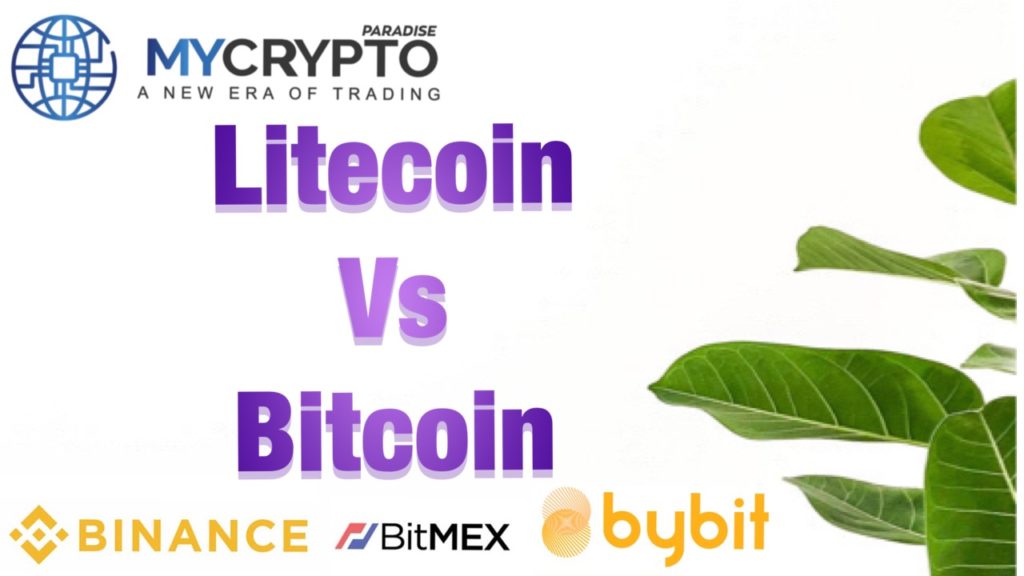In what may seem like not so long ago, a person going by the alias, ‘Satoshi Nakamoto,’ struck the world with a powerful opportunity. While it still may be a mystery who is behind this revolution, either way, this powerful invention led to a global movement. Satoshi Nakamoto’s fulfilled vision, Bitcoin, evolved people around the world with its ominous potential.
People wanted to join in leading similar movements like Nakamoto. One such person was Charlie Lee. Charlie Lee was a former Google engineer; inspired by Satoshi Nakamoto’s tides in giants’ ocean; he created his movement called Litecoin.
While Lee’s creation, Litecoin, inherited many of its attributes from the original cryptocurrency, Bitcoin, it still led a movement on its own. In this article, we’ll be discussing the origins of Litecoin, its difference with Bitcoin, and which one’s better.
Overview
Despite its shared attributes with Bitcoin, Litecoin led a movement on its own. Bitcoin was very challenging to acquire in its nascency, and the mining difficulty became computationally expensive with the introduction of costly specialized mining devices called ASICs. ASICs rose the costs of mining Bitcoins by a significant amount, making it scarcely available.
The rising interest in Bitcoins and cryptocurrency rose Bitcoin’s value from intrinsically nothing to nearly $30 in June 2011. People had started realizing the prospects of Bitcoin both as a promising investment vehicle and revolutionizing technology. As of writing, Bitcoin’s total market capitalization thwarts the likes of global giants such as PepsiCo, Toyota, HSBC, and Netflix.
The ecosystem needed an alternative to Bitcoin, and Charlie Lee answered those demands with the introduction of Litecoin. Litecoin launched to improve Bitcoin’s primary drawbacks with faster transactions and a more egalitarian mining process hence mitigating the rise of another mining monopoly.
Today, Bitcoin and Litecoin have been around for almost a decade. Both the assets have paved the way for newer innovations and movements within the Cryptocurrency ecosystem. Let us dive into how they compare to each other today.
Bitcoin vs. Litecoin – The Similarities
Bitcoin and Litecoin share most of the same attributes; they’re decentralized cryptocurrencies with similar purposes and visions. Charlie Lee launched Litecoin upon popular demand for such a platform in the ecosystem. Litecoin was primarily anointed as the lite version of Bitcoin; therefore, Litecoin adopts many attributes and properties from its predecessor.
Proof of Work
Bitcoin is established as a shared network system on top of the internet. Computers around the world participate in their network and share the burden of the network services. Like Bitcoin’s network, Litecoin’s network provides a platform for an asynchronous interaction of all the participants on the network to follow a set of rules, enabling Bitcoin and Ltiecoin to be decentralized.
Each participant on the network has to follow a decentralized consensus where transactions are verified, aggregated, and assembled with the help of Proof of work. The network assesses the proof of work done in executing the consensus. While Litecoin and Bitcoin share the same fundamentals, they’re not the same.
Storage and Transactions
Like many other cryptocurrencies, Litecoin and Bitcoin can be bought via any exchange or mined. They share a significant number of essential elements. Both the assets require a wallet to be stored, and interestingly, both the assets are notorious for experiencing dramatic volatility.
Bitcoin vs. Litecoin – The Differences
Market Capitalization
As of now, Bitcoin’s market capitalization is soaring at approximately $200 billion, making its market cap 66 times larger than that of Litecoin, which hovers around $3 billion. Although Bitcoin’s total market cap had plummeted from an all-time high of $326 billion in 2017, It still dwarfs every other digital currency. The only asset closest to Bitcoin is Ethereum, which stands at a 40.6 billion dollar market capitalization.
Distribution
One of the principal differences amid Bitcoin and Litecoin is the entire amount of coins ever going to exist on the respective networks. Bitcoin has limited its supply to 21 million coins, whereas Litecoin is set to supply 84 million coins.
Although Litecoin’s larger supply may sound like a significant advantage over Bitcoin; However, that’s not the case. Both Litecoin and Bitcoin are dividable into approximately atomic amounts. Interestingly, the minimum amount of Bitcoin that can be transferred is called a Satoshi, which is equivalent (as you know) to one hundred millionth of a Bitcoin.
Transaction Speed
Mainly all transactions happen instantly (without much delay) on both the Bitcoin and Litecoin networks; However, time is essential (with respect to the network) for those transactions to go through (and process) the network’s consensus. Interestingly, Litecoin was established to develop on Bitcoin’s drawbacks, especially transaction speed, and this factor has undoubtedly helped Litecoin emerge.
The typical period it takes for a transaction to be verified is under 9 minutes, and it may rise to 10 when the traffic is high. However, the time for Litecoin is set at roughly 2.5 minutes. This advantage over Bitcoin makes Litecoin a better option for merchants.
Algorithms
At the core of Bitcoin is the coveted SHA-256 algorithm, in contrast to Litecoin’s new algorithm known as Scrypt. The main practical effect of their algorithms is their significance in the process of mining new coins.
Scrypt was primarily designed to be less tolerant of custom hardware solutions such as ASIC for mining, making Litecoin much more accessible for users to participate in the network as miners in contrast to SHA-256, which is a much more complex algorithm that required a greater degree of parallel processing.
Litecoin vs. Bitcoin – Fees
Litecoin reports an average transaction fee of just $0.327 compared to Bitcoin $1, making it about 30 times as expensive to get a Bitcoin transaction integrated into a new block of transactions. Moreover, with Bitcoin’s volatility, transaction fees have reached up to $6.
Litecoin vs. Bitcoin – Scalability
Bitcoin struggles with scalability; the high average times of verifying transactions can put a toll on Bitcoin’s network. Bitcoin’s network can’t handle as many transactions at once in contrast to Litecoin. However, Litecoin doesn’t experience the same amount of traffic as Bitcoin does. Therefore there’s no clear indication of what asset is more scalable.
Conclusion
Bitcoin and Litecoins can be easily bought, sold, and traded on any cryptocurrency exchange today. With traders and shifting into the cryptocurrency ecosystem, both Bitcoin and Litecoin have been heavily favored.
Traders worldwide remain bullish about Cryptocurrency’s potential. Bitcoin is notorious for projecting highs that it could reach again. With 19 million coins already minted, it is quickly approaching its 21m coin maximum.
Coherently, Litecoin is at the core of most traders’ interest because of its fast transaction times and cheaper fees. Both cryptocurrencies boast high trading volumes, making them a preferred choice. Both cryptocurrencies are undeniably holding the pillars of the Cryptocurrency ecosystem; therefore, there isn’t a clear winner which one’s better.
Either way, both assets are working together to solve a huge problem.







